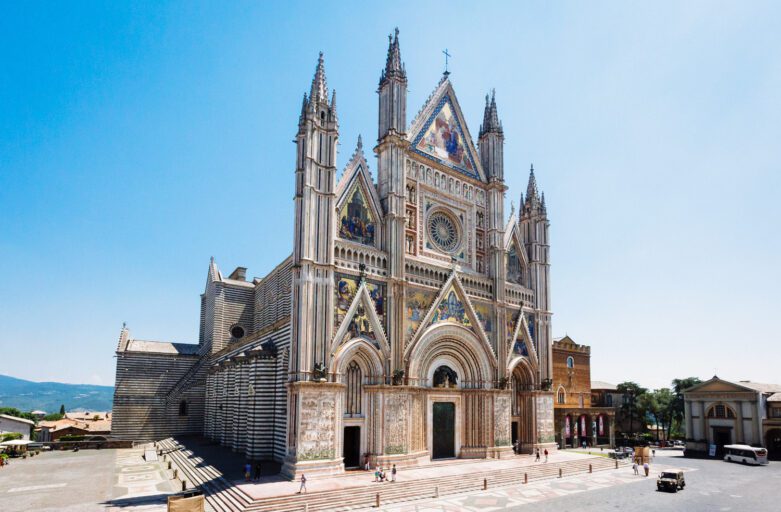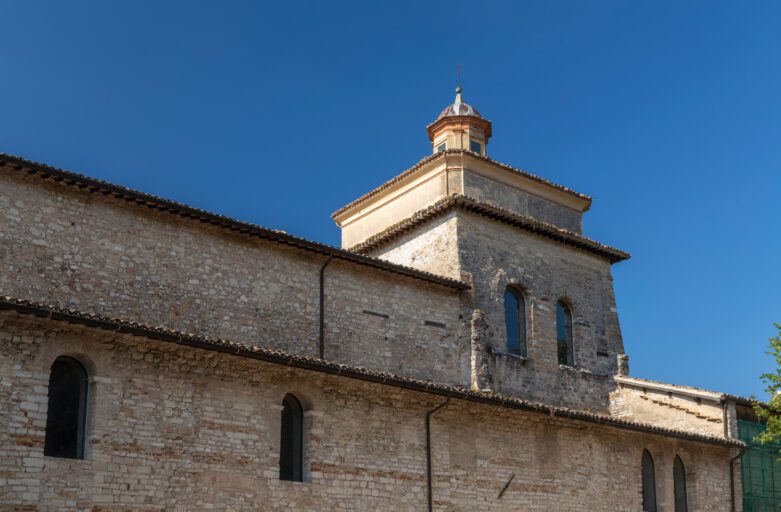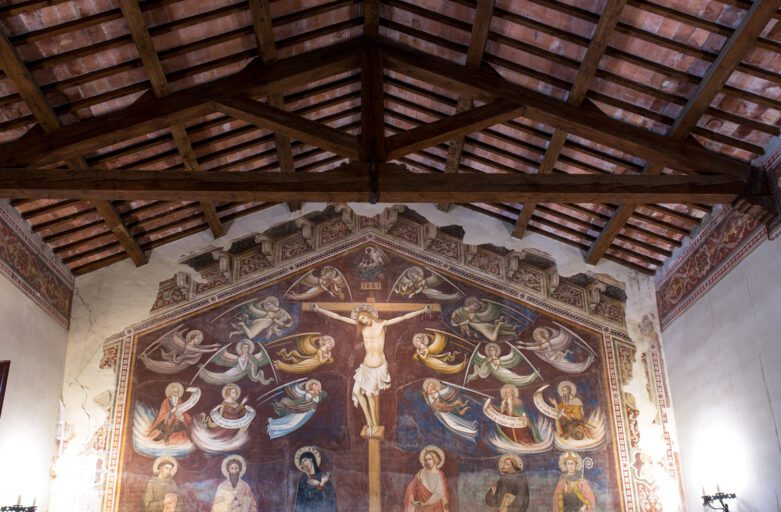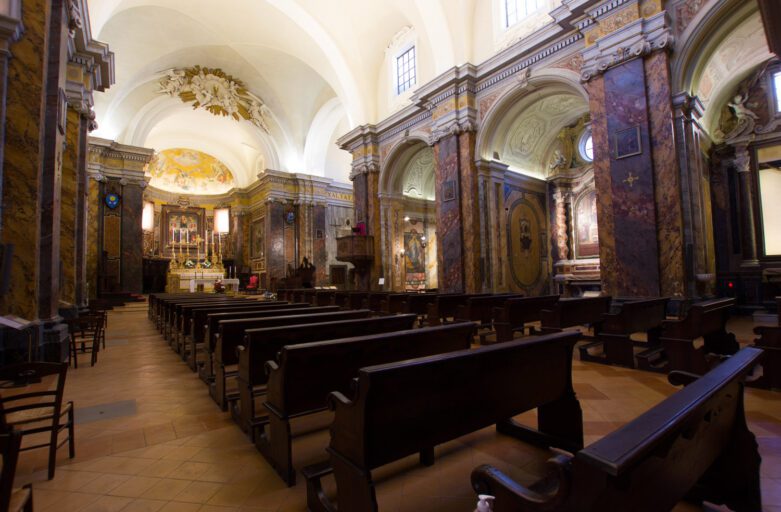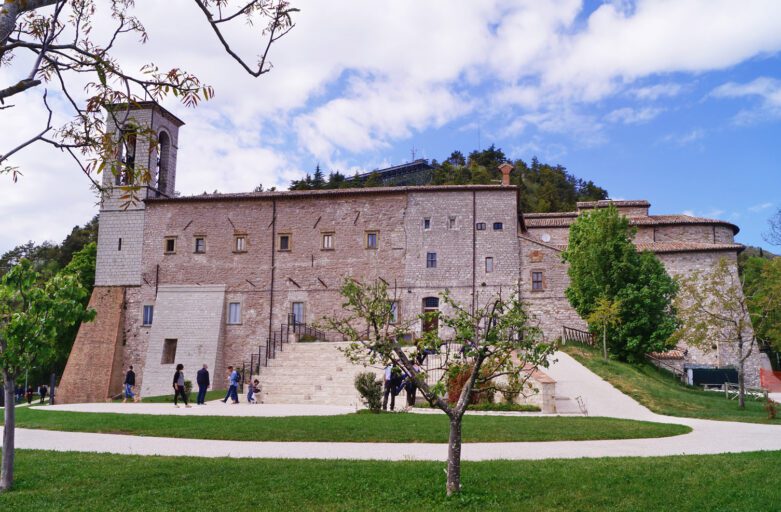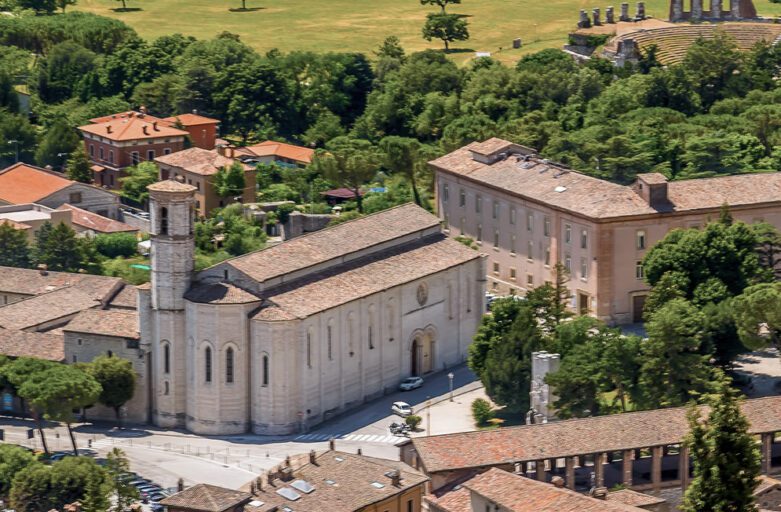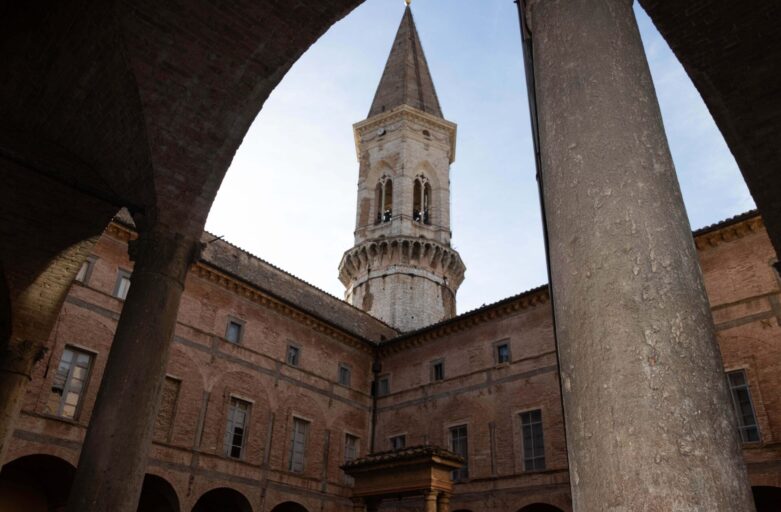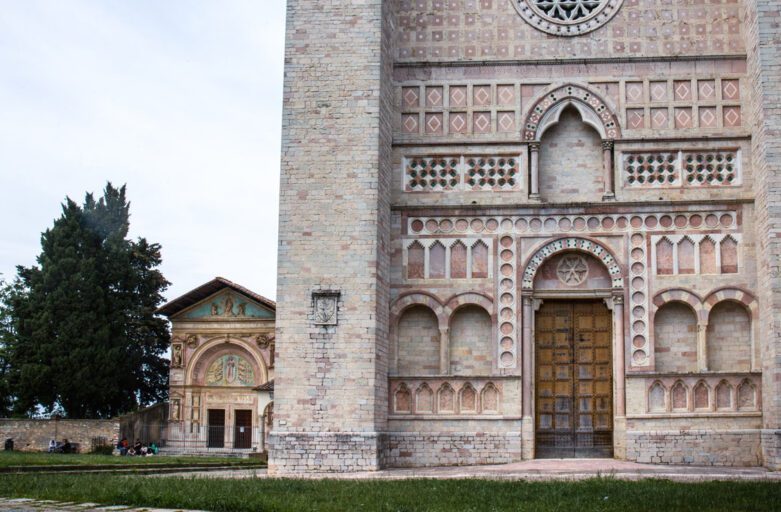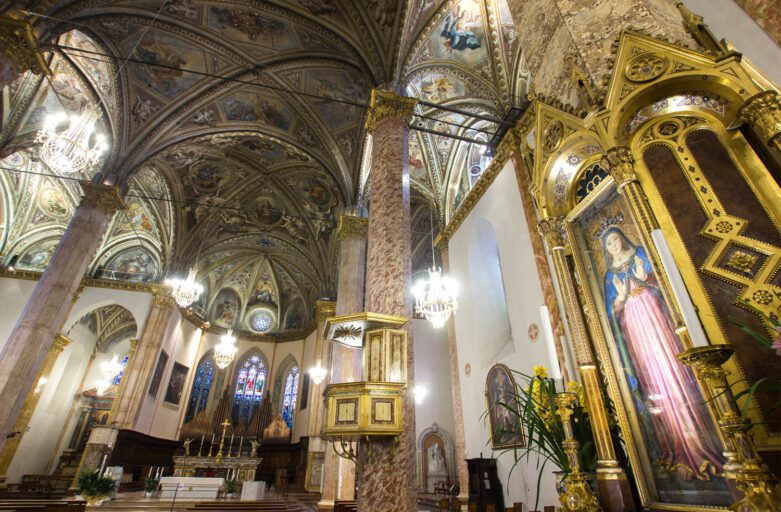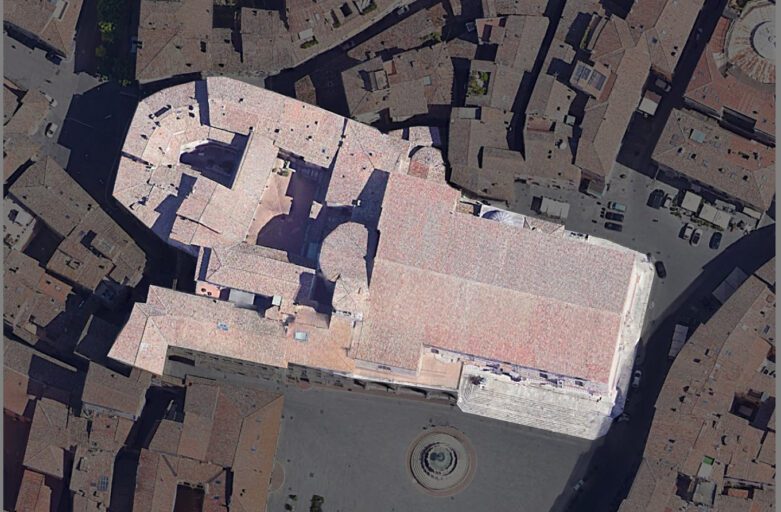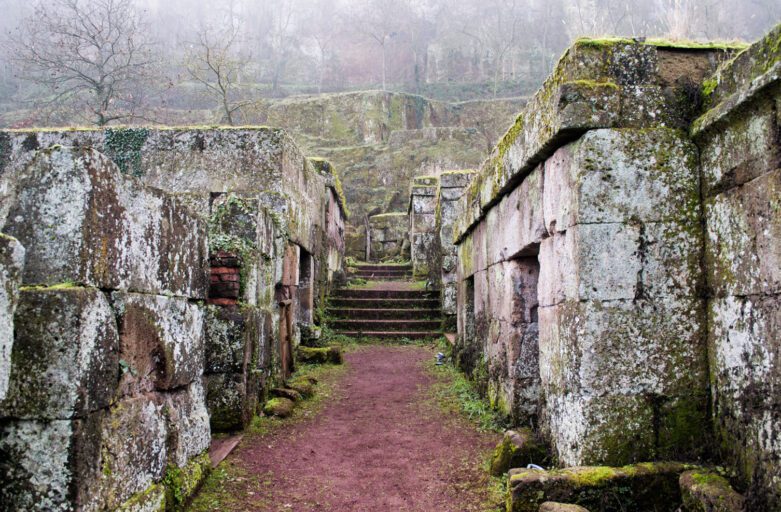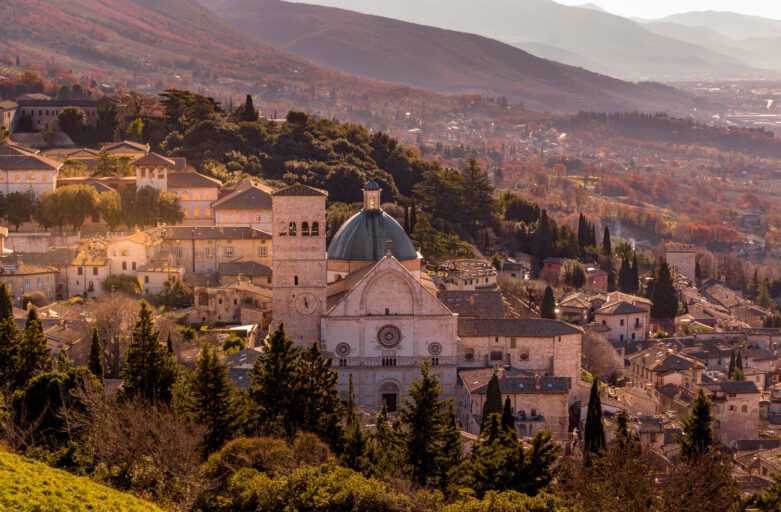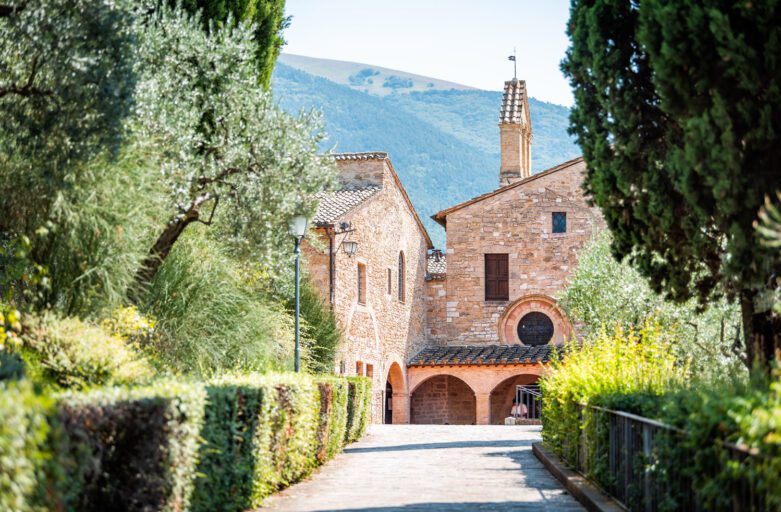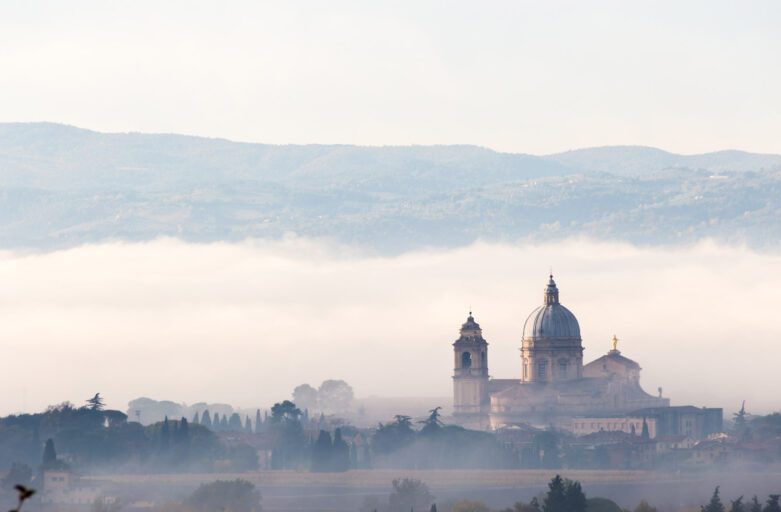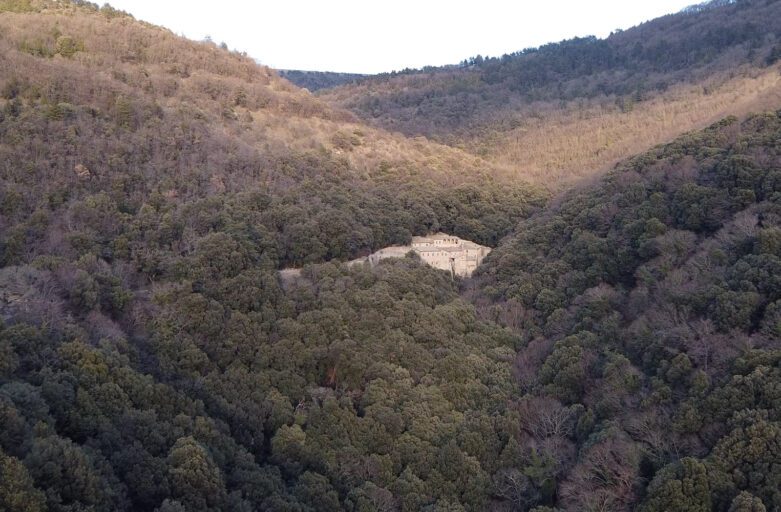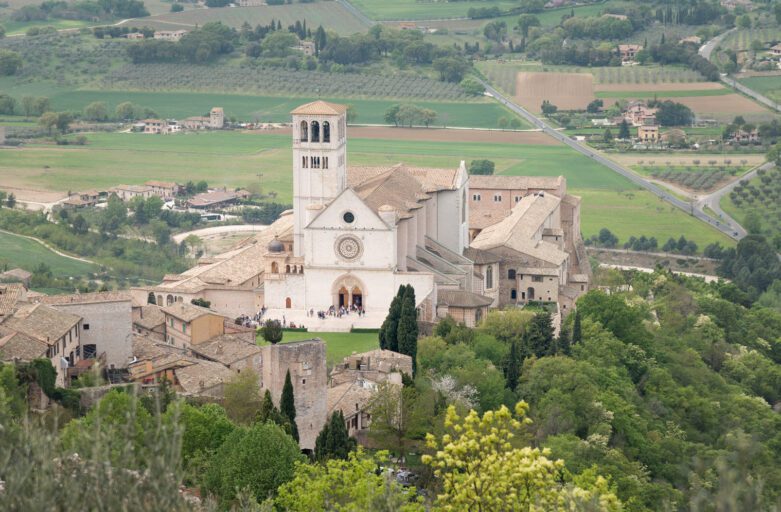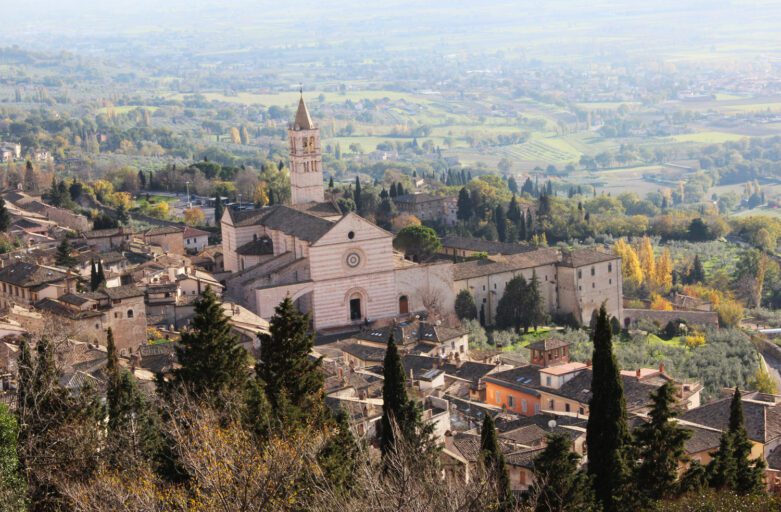The History of a Centuries-old Building Site Origins of the Cathedral of Saint Mary’s Assumption The Cathedral is a sign of the presence of God, as well as of an active and industrious Christian community
Tag: Spirituality
Basilica of the Holy Savior (San Salvatore)
Basilica of the Holy Savior in Spoleto Ancient Origins Although not included in the standard tours, the Basilica of the Holy Savior (San Salvatore) is surely among the “must see” things in Spoleto.
Oratory of Saint Bartholomew, Church of Saint Francis
The Church of Saint Francis Near the imposing Fortress in Città della Pieve a Church of Saint Francis exists, now also renamed Shrine of Our Lady of Fatima. The Church of Saint Francis was built precisely by the Franciscans, just outside the town gate called Porta Perugina
The Cathedral of Saints Gervasius and Protasius
A Cathedral in a Small Town On walking in the streets of Città della Pieve, you will be noticing many fine buildings, both public and religious, that enliven the place. To whose who come from Gramsci Square, that is the downtown nucleus, one of the main monuments will immediately appear
Saint Ubaldo’s Basilica – Gubbio
A Brief Biography The personage of young Ubaldo – who was officially declared a saint on March 5, 1192 – cannot be divided from Gubbio and the great love the town’s inhabitants still have for him.
Saint Francis’ Church in Gubbio
Francis, the Man; and Gubbio The story of Gubbio and Francis of Assisi means the discovery of an intense relationship, interwoven with travels, friendship, and feelings. Francis’ father, Bernardone (“Big Bernard”)
Saint Peter’s Abbey
The way that starts from the Church of Saint Ercolano, and that in past times led directly to Rome, ends in Borgo Bello, the “Beautiful Suburb,” an area that developed thanks to the Benedictine abbey dedicated to Saint Peter.
San Francesco al Prato, San Bernardino (Churches)
Perugia e San Bernardino
Telling about the beauty of Saint Francis Square, we cannot but start by mentioning Saint Bernardine of Siena, a friar from that town in Tuscany, who had frequent, influential contacts with Perugia – see below.
The Cathedral of Saint Lawrence
A Cathedral to Welcome Them All The current Cathedral of Saint Lawrence replaced an older church, a Romanesque church, that therefore must have been built in the 12th century.
The Saint Lawrence “Island” – Perugia
The Saint Lawrence “Island”: the ancient district, heart of Perugia since Etruscans. It includes Perugia Underground, the Chapter Museum and the Cathedral.
The Necropolis at “Crocifisso del Tufo”
When the Etruscans Founded Orvieto: From Sky down to Earth A tour between earth and sky: this is how Orvieto can be visited and discovered because of both its geographic position (a town rising on top of a cliff, surrounded by a valley) and its history (from ancient Etruscans to nowadays)
The Cathedral of Saint Rufinus in Assisi
Assisi’s Cathedral: info and story of Saint Rufinus and his church, from the Romanic facade to the “tug of war” conflict.
Saint Damian, Saint Clare’s Home
In the Assisi plain and among the olive trees of the countryside, there is a place much beloved with reference to the Franciscan origins: the Shrine of Saint Damian. Here silence and peace reign, wonderfully framing the view on Nature all around.
The Porziuncola and Saint Mary of the Angels
Saint Francis of Assisi and the Porziuncola The expanses below Assisi are among the most fascinating in Italy thanks to their colors and the view they afford on the town, which follows the contours of Mount Subasio in its white and rose stones.
The Hermitage of Carceri in Assisi
From Grotto to Shrine The architectural complex called “Hermitage of Carceri” started and developed around a grotto in which Saint Francis of Assisi used to retreat in order to pray.
The Basilica of Saint Francis
Saint Francis’ Legacy When in 1226 Saint Francis of Assisi died at the age of 44, he was already very famous, and his movement – a true religious Order since 1223 – was followed by thousands of people.
The Basilica of Saint Clare
Clare, and the Birth of the Second Franciscan Order When Francis made his spogliazione (the act of stripping of his garments as well as, symbolically, all possessions) in the main square, Clare was little more than a baby.
